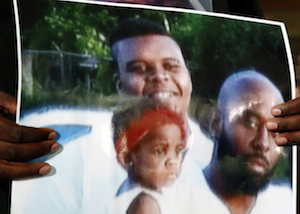Guard starts to leave Ferguson
McCaskill wants shooting probes to conclude at same time
Saturday, August 23, 2014
FERGUSON, Mo. — National Guard soldiers began withdrawing from Ferguson, Mo., on Friday, five days after being sent to help quell the unrest that began after the shooting of an unarmed black teenager by a white police officer.
But even as the Guard packed up orange cones, pulled down yellow police tape and started to leave, questions remained about the shooting itself and the way the authorities have handled it.
A grand jury continued to hear evidence about the deadly altercation Aug. 9 between Michael Brown, an 18-year-old who was about to begin college, and Ferguson police officer Darren Wilson. However, it could take weeks before jurors reach a decision on any charges against the officer.
Also underway is a parallel federal investigation into whether the Ferguson Police Department has engaged in civil-rights abuses, which could be challenging to prove because of the nature of the episode and the strict standards of federal law.
Sen. Claire McCaskill, D-Mo., said Friday that she’s pushing for federal and St. Louis County investigations to be completed around the same time so that all evidence in the case can be made public — a step many consider important should prosecutors decide not to charge the officer. Her office said Friday that the Department of Justice hasn’t given a timeline for the federal investigation.
McCaskill, a former prosecutor in the state, said she’s hopeful the physical evidence in the case — including blood-spatter patterns, clothing and shell casings — will provide “incontrovertible facts” about what happened during the shooting. She said whatever St. Louis County prosecutors decide, it will be important to explain the decision by providing that physical evidence, and that won’t be possible if the federal investigation is ongoing.
McCaskill said she urged Attorney General Eric Holder during a meeting earlier this week to speed up what is typically a lengthier federal process.
“What we want to avoid is a decision being made without all the information being available to the public also,” McCaskill said, adding that not being able to do so could “create more stress and certainly much more fear that we would be back to worrying about people being able to protest safely.”
“Obviously all of us are concerned, not just about that this process be fair, but what does this next six months look like,” she said.
Gov. Jay Nixon didn’t say whether he agreed with McCaskill’s call to conclude both investigations at the same time. He said the full focus is on seeking justice.
“To me it’s one you’ve got to get right. Just got to get it right,” he said.
Many Ferguson residents said they fear the community’s anger will explode anew if Wilson isn’t charged.
“This officer has to be indicted. I’d hate to see what happens if he isn’t,” said resident Larry Loveless, 29, as he stopped at the memorial for Brown where he was killed.
The protests over Brown’s killing have grown smaller and less confrontational over the past several days.
On Thursday night, the formal protest ended before midnight and for the most part showed little hint of the tension of the previous 13 days.
Police said that before Thursday night, 163 people had been arrested in the area where nightly protests have unfolded. Most of them, according to data released by St. Louis County, are Missouri residents, but just seven live in Ferguson.
Police cited 128 of them with failure to disperse, and another 21 people face burglary-related charges.
On Thursday night, another seven people were taken into custody, including three people from Detroit, most of them for minor offenses.
“It was a hot and muggy day, but the temperatures did not heat up on the streets of Ferguson,” said Capt. Ron Johnson of the Missouri State Highway Patrol.
Nixon announced earlier Thursday that the National Guard, which was sent in to provide security for the police command center in Ferguson, would be withdrawn. Members of the Guard still stood at their posts Thursday night.
On the street, the protesters who remained overnight, about 70 or so who marched in a familiar circuit up and down West Florissant Avenue, pledged to keep going back.
“It can go on for another week or it can go on for two more months,” said Derrick Robinson, a member of the clergy in Ferguson.
He attributed the smaller crowd partly to a police crackdown.
The protests Monday led to violent clashes in which police used tear gas and rubber bullets, but by the end of the week a calm seemed to have settled in.
Robinson said the peaceful nature of Thursday night’s protest came about through the efforts of local leaders.
“Several of the clergy, we stepped in and helped police the crowd,” he said.
Information for this article was contributed by Campbell Robertson, Marc Santora and Joseph Goldstein of The New York Times and by Sara Burnett, Jim Salter and Ryan J. Foley of The Associated Press.
